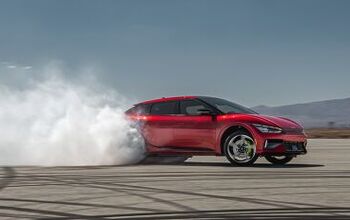Porsche Patents A Two Times Three Stroke Engine
Porsche is working on an innovative engine concept that could bring significant gains in efficiency and power density.
First discovered by our sister site, AutoGuide, Porsche has filed a patent application (Appl. No. 18/585,308) with the United States Patent and Trademark Office (USPTO), developed in collaboration with the Technical University of Cluj-Napoca in Romania. This patent outlines a unique "two times three strokes" engine design that could potentially revolutionize internal combustion technology.
The engine uses a crankshaft mechanism that moves within a ring (annulus) to create a motion similar to a spirograph toy. This unique design allows the crankshaft to rotate with two different top dead centers (TDC) and two different bottom dead centers (BDC) during the cycle. Unlike conventional engines that have a 720° cycle for a four-stroke, this new engine completes a full cycle with a 1080° rotation, effectively functioning as a six-stroke cycle with two three-stroke processes.
The engine's six phases are:
1) Intake
2) Compression
3) Power
4) Compression
5) Power
6) Exhaust
The piston reaches a higher TDC between the second and third strokes and again between the fourth and fifth strokes. It hits a lower TDC between the sixth and first strokes. For the BDC, the piston moves between the first and second strokes and again between the fifth and sixth, with a lower BDC occurring during a scavenging phase between the third and fourth strokes.
The engine's configuration includes a piston connected to a planet wheel via a connecting rod. The planet wheel engages with an annulus and rotates within it, linked to the crankshaft. This design allows the engine to have two power strokes, providing more power than a traditional four-stroke engine while maintaining cleaner combustion than a two-stroke engine. The system could also include mechanisms for adjusting compression ratios and timing, and optimizing the combustion process.
The additional scavenging phase in this engine design could be especially beneficial for synthetic e-fuels or hydrogen combustion—which can combust with extremely lean air/fuel mixtures. This could potentially make the engine more efficient and versatile in its fuel usage.
The engine's design allows it to be adapted into various configurations, such as Inline, V, W, or flat/boxer layouts, and is best suited for a number of cylinders that is a multiple of three.
Become a TTAC insider. Get the latest news, features, TTAC takes, and everything else that gets to the truth about cars first by subscribing to our newsletter.
More by TTAC News Staff
Latest Car Reviews
Read moreLatest Product Reviews
Read moreRecent Comments
- Redapple2 Legend. Mic drop.
- Digby Aurora, Trail Duster, Trooper, Colt, Talon...
- Teddyc73 First of all, 2027?!? Dodge needs vehicles now! Second, this is something American companies do and it's so ridiculous. They have a name that's been around for years which has grown considerable name recognition and then they suddenly discontinue it for a new vehicle with a new name. Chrysler did this only a few years ago with the Town & Country. Dodge flushed the Caravan name down the drain, now Durango. It makes no sense. While I would never buy an Asian car at least they stick with their product names. Honda will never dump the Accord name and rename their midsize sedan something else for example.
- Teddyc73 A bigger more pressing question, why are automakers now suddenly called "OEMs"? I'm sure "legacy OEM's" isn't far behind.
- Keith_93 It is so hard to care what car names are used from a company called "Stellantis".





































Comments
Join the conversation